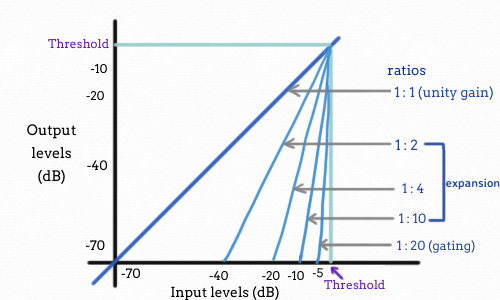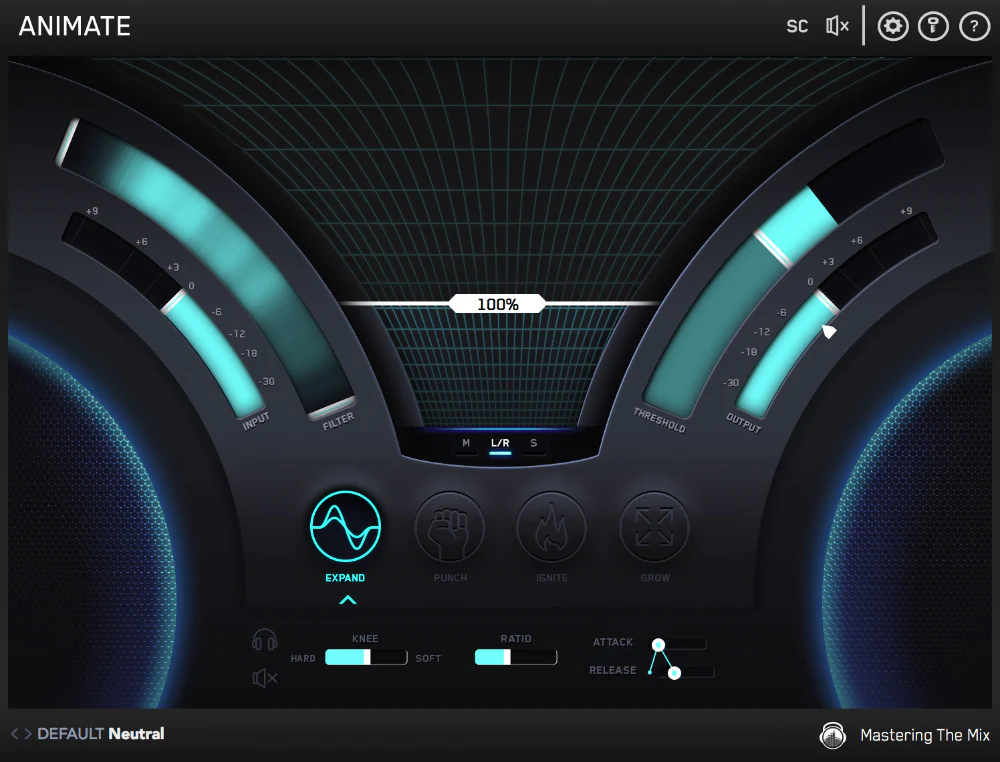What Is Audio Expansion
Introduction
It has become our obsession to provide modern musicians with the best tools and technology available. If you understand the upright and downward expansion, you will have an easy time with this process.
This is a process that is not that widely used and commonly found in music production but it still exists, meaning that if in case you need to reach out for it, you will be able to perform it and actually improve your mix.
Here we will explore the basics of audio dynamics expansion and we will provide some basic stuff in order for you to understand and master this great process. So let’s start.
What Defines Audio Expansion?
The term “audio expansion” refers to the expansion of a signal’s dynamic range. In essence, it is the opposite of audio compression. Audio expanders, like compressors and limiters, have thresholds and ratios that can be adjusted. In contrast to compression and limiting, expansion occurs when the signal level goes above the threshold.
Many people are unaware that there are two types of expansion. The downward expansion method is commonly used to minimize low-level noise such as hiss and hum. During upward expansion, the linearity of the signal remains unchanged below the threshold. If the input changes by 2 dB, the output also changes by 2 dB. Levels increase above the threshold, however.
Percussive instruments such as drums, hand percussion, and other percussive instruments can benefit from upward expansion. In order to emphasize attacks, transient shaping is one of the functions. Imagine that you have a drum loop that contains too much room sound.
In contrast to traditional expansion, the upward expansion allows peaks to rise above the characteristic room sound while leaving the characteristic room sound alone. Once again, upward expansion shines in this area.

What is the Purpose of Expander in Audio?
It is possible to expand the dynamic range rather than compress it by using an expander instead parallel compression or a compressor. To maintain a consistent level, compression is commonly used to reduce loud transient peaks.
A signal is distorted by compression due to its processing. In order to achieve this, the compressor typically emphasizes certain harmonics based on how it is striking the incoming signal. Consequently, expanders are most effective when a wider dynamic range is required, as they provide that perk.
An audio signal’s dynamic range is the difference between its loudest and quietest levels. Processors that control audio dynamics control the quality of a sound, and their names describe how they affect a sound’s dynamics.
It is possible to vary the volume of instrumental or vocal performances by using expanders. Using this technique can result in a more organic sound. This may lead to a reduction in its presence in the mix.
What is Compression vs Expansion vs Gate?
With compression, you are able to reduce the volume of the loudest moments in the recording so that you can bring them closer together. In order to limit the dynamic range of an input or output signal, you can use audio compression. Imagine the difference between a voice singing softly and a voice that sings loudly.
There is a great deal of similarity between the expander and the gate. The only difference between an expander and a gate is that the expander tracks the level after it has fallen below the threshold and reduces the level based on the new level, whereas for example a gate immediately closes when the level falls below the threshold.
A popular method of minimizing low-level noises such as hiss and hum is downward expansion. A downward expander is the opposite of a compressor in that it gradually reduces the output level below a certain threshold as opposed to compressing it above a certain threshold.

With 2:1 compression, an increase in the input level of 2 dB above the threshold results in an increase in the output level of 1 dB above the set threshold. When the input level is decreased by 1 dB below the threshold, the output level is attenuated by 2 dB.
As a result of traditional expansion, the room sound decays more quickly, making quiet sounds quieter, whereas upward expansion brings the peaks above the characteristic room sound while leaving it alone. With 1:2 expansion, for instance, a 1 dB increase above the threshold will result in a 2 dB increase in the output.
Sometimes, you do not want the percussion hits to be too uniform in volume, but rather the most important hits should be louder than the rest.
A phrase can be expanded by making it longer than expected. In addition, because expanders do not completely eliminate the signal, they tend to sound more natural. Additionally, expanders allow for greater control. By using intuitive controls, you can adjust how quickly the effect reacts to changes in signal levels.
In addition, some downward expanders have a range setting that enables you to adjust the maximum amount of attenuation, ensuring that the signal is never completely cut off. Expanders are devices whose output levels decrease faster than their input levels. As a result of further attenuating the lower levels of the signal, you in fact increase the dynamic range of the program.
Expansion Parameters
The use of expanders results in quieter sounds becoming quieter and louder sounds becoming louder, by increasing the difference in loudness between sections of audio. When you want to increase the dynamic range of an audio recording, expanding is a useful tool.
You might want to reduce the volume of the quieter portions of a recording if you have a noisy recording. Expansions have the side effect of changing the decay rate of sounds, which may result in silencing quieter parts of your audio. An expander’s main controls are its attack and release times as well as its ratio.
The attack time determines the response time of the expander when a signal level exceeds the threshold. When the signal level drops below the threshold, the release time determines how fast it reacts.
The ratio determines the amount by which the volume should be reduced. When the ratio is higher, the volume is turned down more. When the ratio is 12:1 or greater, it is considered to be a noise gate.
In addition, expanders can be used to process audio either conventionally or creatively for sound design and effects.

What Does Expansion do in a Compressor?
The term ‘compression‘ is used by many engineers to describe downward compression. That is, bringing down the level of the signal above the threshold set by your compressor in order to make louder things quieter.
We overlook upward compression, which involves bringing quieter sounds to the threshold point; this technique is quite useful for achieving a more transparent sound in certain situations. It is also important to note that expansion-both upwards and downwards-can greatly assist your mix.
When we are giving a dull snare sound, we might not reach for a static EQ, but rather for upward expansion. By doing so, the harder the drummer hits, the more attack, snap, and other goodies will come out, leaving nasty resonances for the ghost notes and softer strokes.
It is true that compression is a beautiful thing when used in its classic form, but it is not the only thing to consider. It is also important to note that traditional compression techniques have been employed for so long that even some producers of electronic dance music are growing tired of the method. Instead, what have they turned to? Expansion is the answer.
Conclusion
With an expander, you can add some punch to your music while maintaining incredible control. Dynamic processing is a technique that is not often discussed and is certainly underutilized.
And if you understood the downward and upward expansion, you surely are on the right way to understanding how to treat the dynamic range of a signal and actually improve the signal. Every audio signal can benefit from these processes and this topic should not go unnoticed.
If you are having any points to make about this process, please let us know in the comment section below and we will be more than happy to elaborate with you.
Best Mastering Compressors: Top 9 Units For Your Mastering Studio!
What Are Optical Compressors: Top 5 Opto Compressors Listed!
What is FET Compressor: Best 5 Models, Guide, and Plugins!
What Is VariMu Compressor: Key To Achieve Classic Sound!
Top 10 Best 500 Series Compressors: Best Models Shown!






